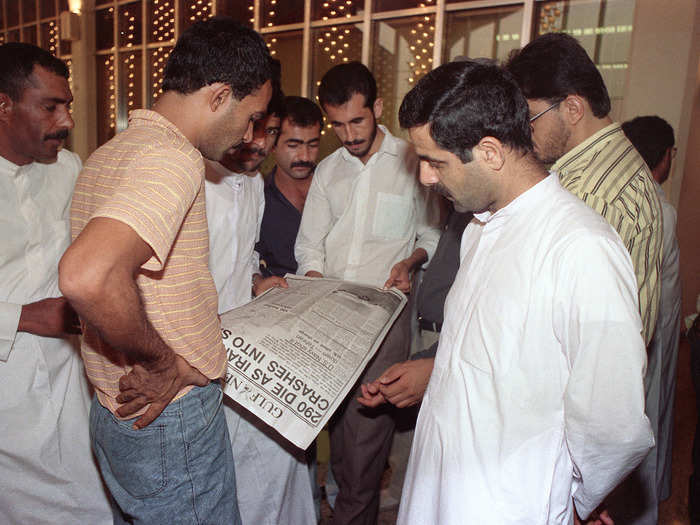- Home
- slideshows
- miscellaneous
- Inside the US Navy's mistaken shooting of Iran Air Flight 655 in 1988, which killed 290 people
Inside the US Navy's mistaken shooting of Iran Air Flight 655 in 1988, which killed 290 people
In 1988, the Iraq and Iran war, which had been going on since Iraq invaded in 1980 and led to the deaths of about one million people, was winding down. The US had supported Iraq and Saddam Hussein through the conflict.

To monitor the situation, the US Navy was patrolling the Persian Gulf. Its main task was to protect oil routes from attacks. The Navy's rules of engagement weren't public, but, according to The New York Times, ships were told to be cautious to avoid the US entering the war or causing an "international incident."
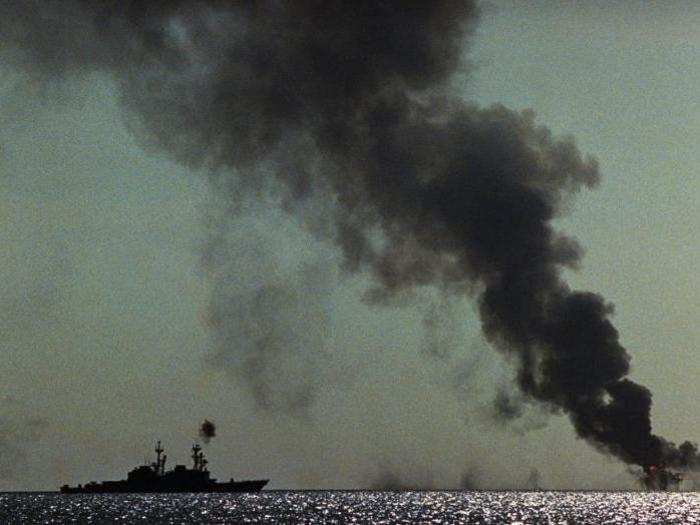
Source: The New York Times
The ship in question was the USS Vincennes, a 9,600-ton cruiser.
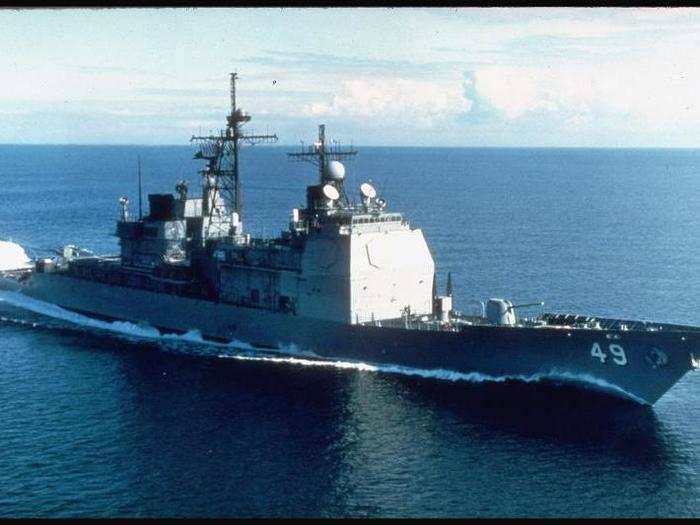
Sources: Washington Post, The New York Times
The commanding officer was Capt. Will C. Rogers III. According to a Middle East correspondent from the time, he had been acting recklessly aggressive in the month before the incident. Yet he was later awarded the Legion of Merit, for his service as commander between 1987 and 1989.
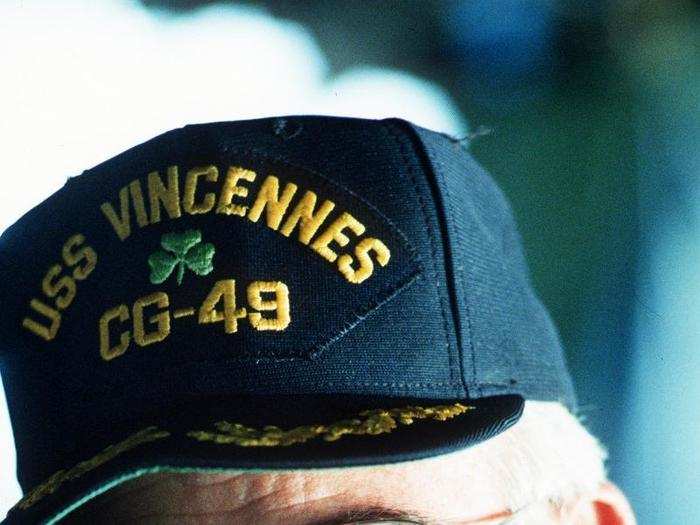
Sources: Washington Post, Slate, The New York Times
On July 3, 1988, the USS Vincennes and another US vessel were caught in a skirmish with Iranian gun boats. The skirmish began just after 10 a.m. Forty minutes later, the US Navy fired at the gun boats, and sunk two of them. In initial reports, this was meant to have happened in international waters, but in 1992, it was established that it was in Iranian waters.
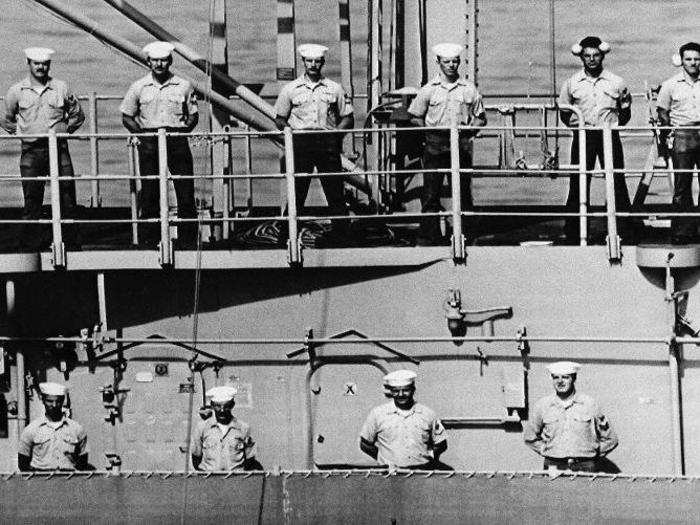
Sources: Washington Post, The New York Times, Slate
At 10.15 a.m., Iran Air Flight 655 took off from nearby Bandar Abbas International Airport. The commercial flight was on an Airbus 300, and had 290 people on board. It was headed for Dubai. But at 10.47 a.m., the USS Vincennes' radar picked up the flight.
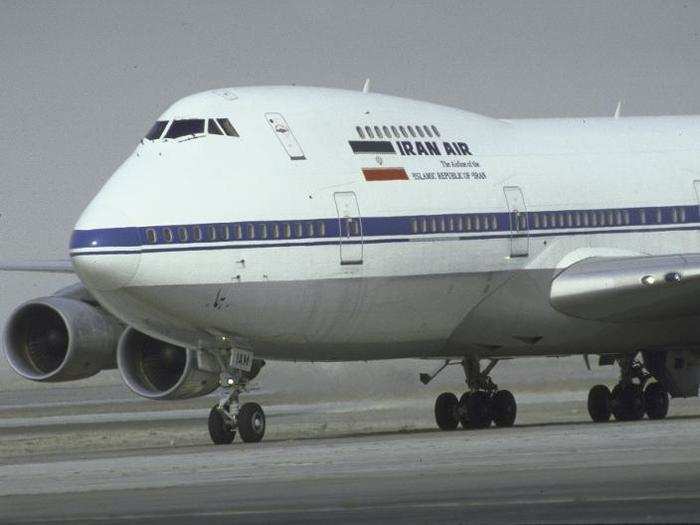
Sources: Washington Post, The New York Times
In the 1970s, the US had supplied Iran with 80 F-14 fighter jets. This could explain why when personnel on the USS Vincennes saw the Airbus 300 on its radar they thought it was a fighter jet. It's also worth noting that the airport was used by Iran's military along with civilian flights.
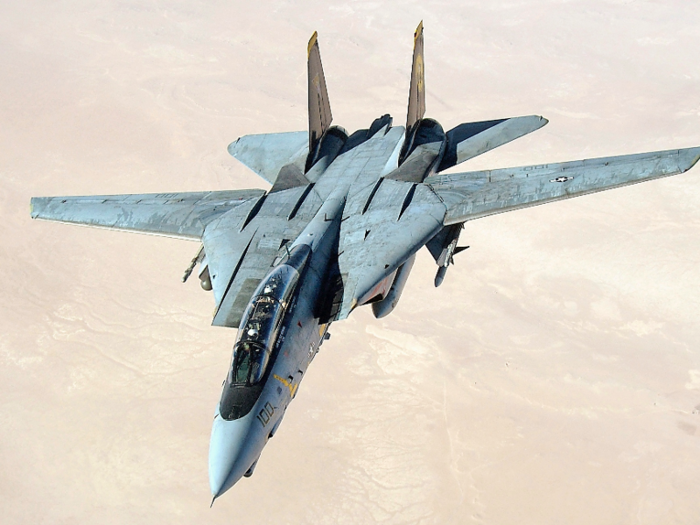
Sources: Washington Post, The New York Times
At 10.49 a.m., the USS Vincennes sent distress signals asking Iran Air 655 to identify itself, but it didn't. According to the Navy, the plane began to descend. This was later proven to be untrue. At 10.51 a.m., it was warned again. In total, the Navy said it warned the plane seven times — three by a civilian channel, and four by a military channel.
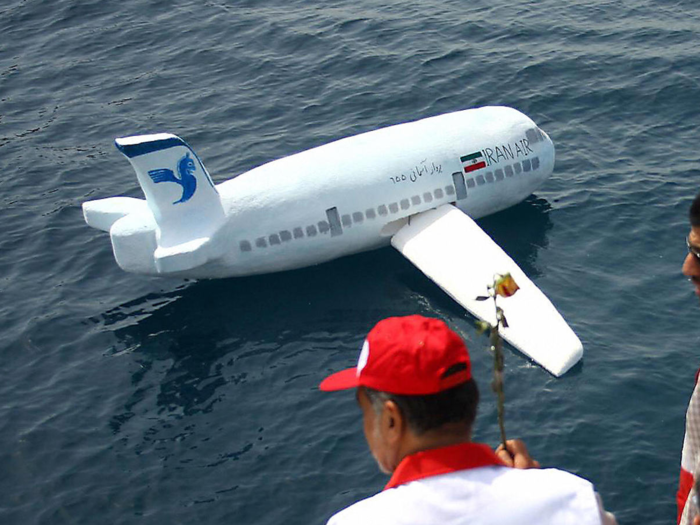
Sources: The New York Times, Slate
At 10.51 a.m., the flight was declared hostile. Three minutes later, when it was nine miles away, the US shot Iran Air 655 out of the sky with a surface-to-air missile.
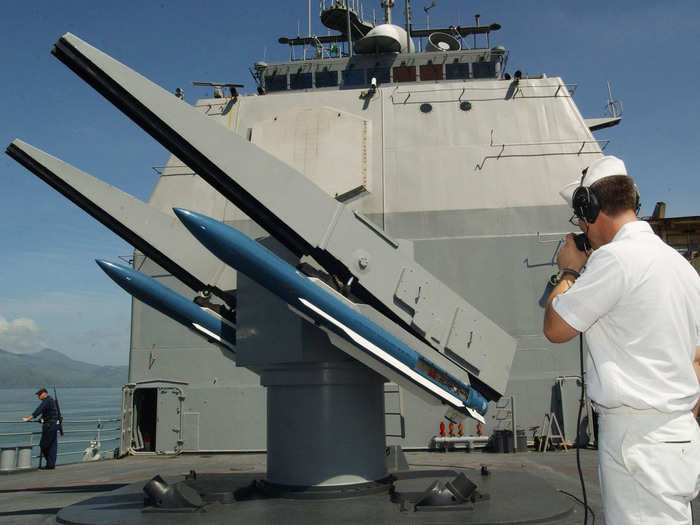
Source: The New York Times
The plane crashed into the water. Neither one of the US ships tried to help, or search for survivors.
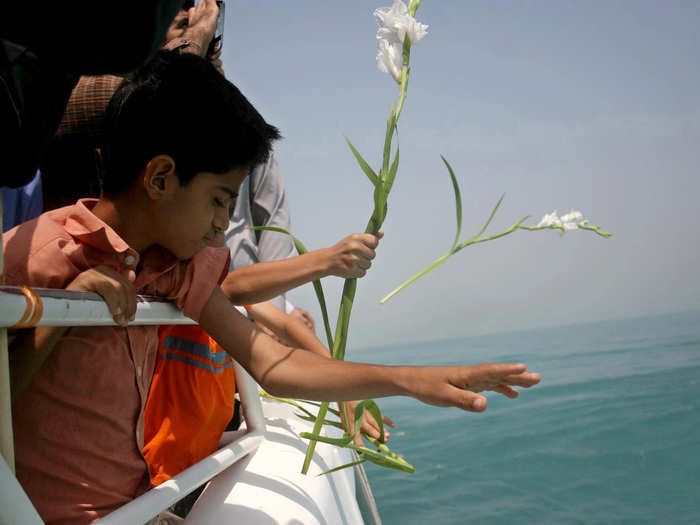
Source: The New York Times
Every one of the 290 passengers, 66 of whom were children, died. Their bodies were recovered from the Gulf and later buried.
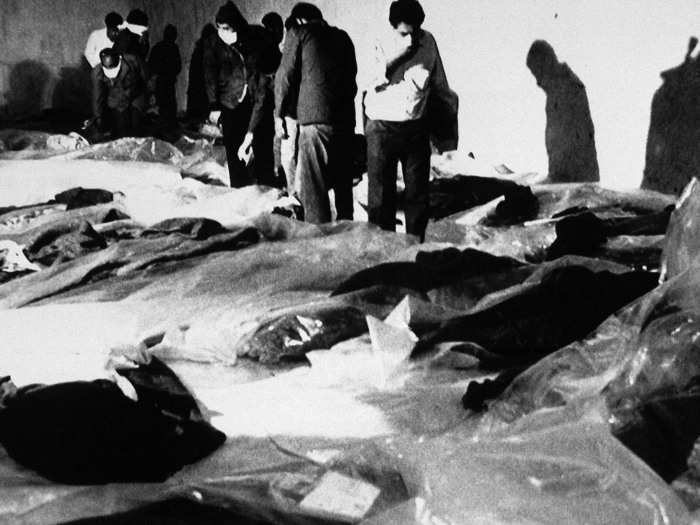
Sources: The New York Times, The New York Times
Iran mourned. This man was a pilot whose wife was a crew member on the flight.
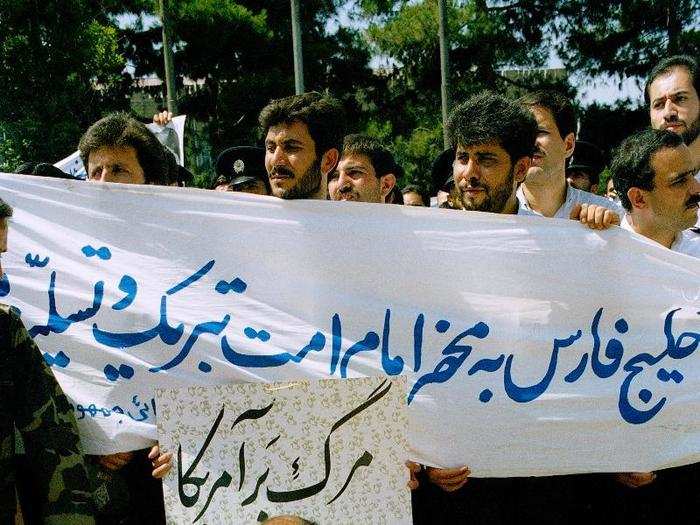
Tehran called the tragedy a "barbaric massacre."
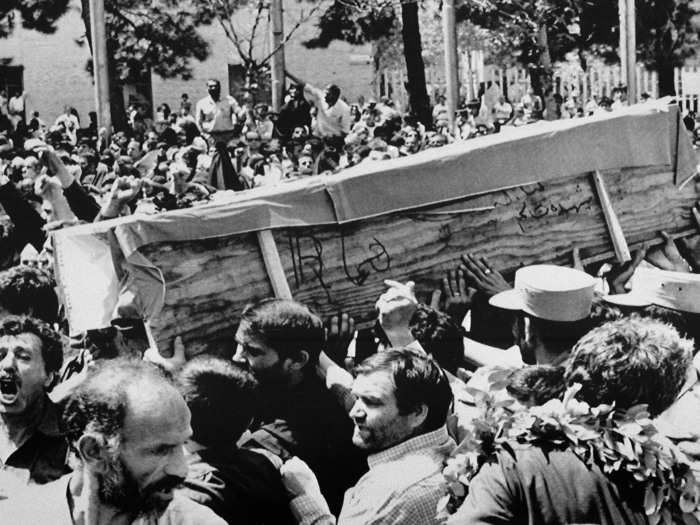
Thousands of Iranians chanted "Death to America," in a mass funeral for those who died.
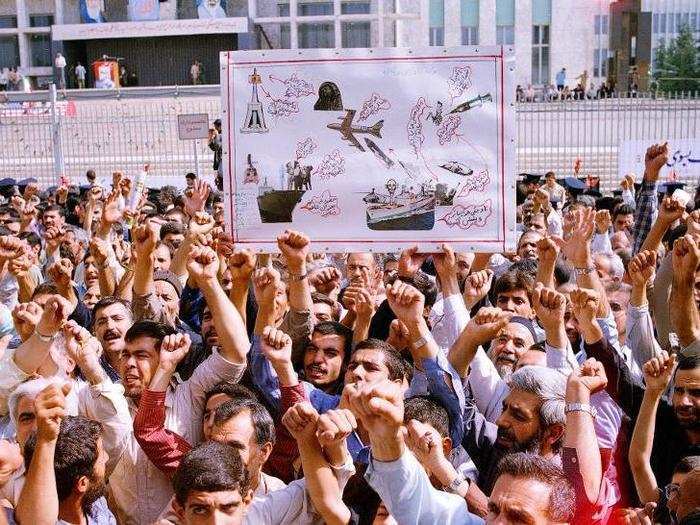
Alongside the grief, Iran was outraged. Many in Iran's government didn't believe the attack was an accident at all, but a message sent by the US. In response to the attack, Iran's government said it would "avenge the blood of our martyrs."
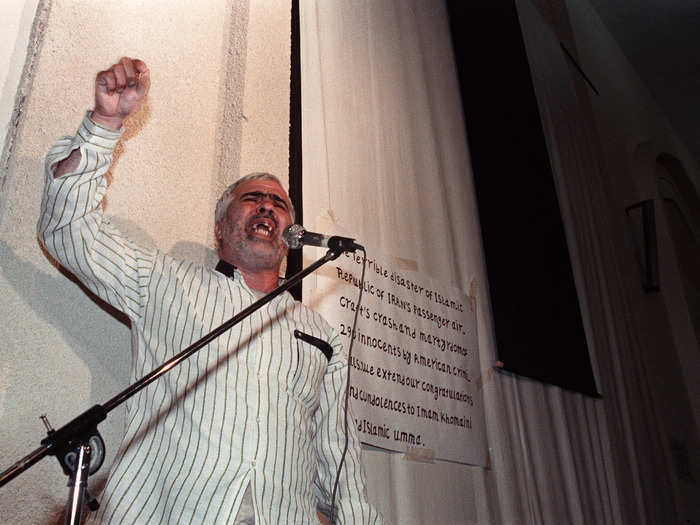
Sources: The New York Times, Newsweek
President Ronald Reagan and Admiral William Crowe defended the US Navy's actions. They both said Roger's first responsibility had been the safety of his ship and crew. Crowe told media he had "sufficient latitude" to defend his crew. "They do not have to be shot at before responding," he said.
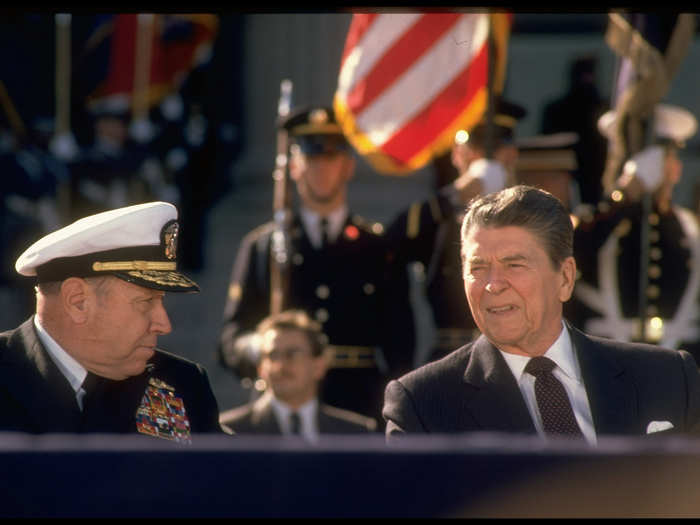
Source: The New York Times
Iran called on the UN to step in and censure the US. But some American politicians didn't take Iran's demand seriously. As George H. W. Bush campaigned to be president month later, he said, "I will never apologize for the United States — I don't care what the facts are."
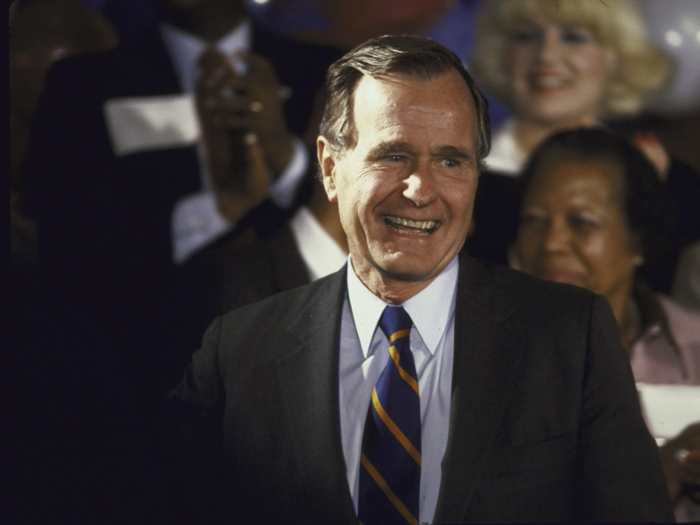
Seven weeks after the attack, the Pentagon released an official report of what happened, written by Rear Admiral William Fogarty. It said Iran was also responsible for allowing the plane to fly low while the battle waged. But it found a number of discrepancies — the flight had never descended, it was flying in commercial airspace, and it explained why the flight failed to respond to distress signals.
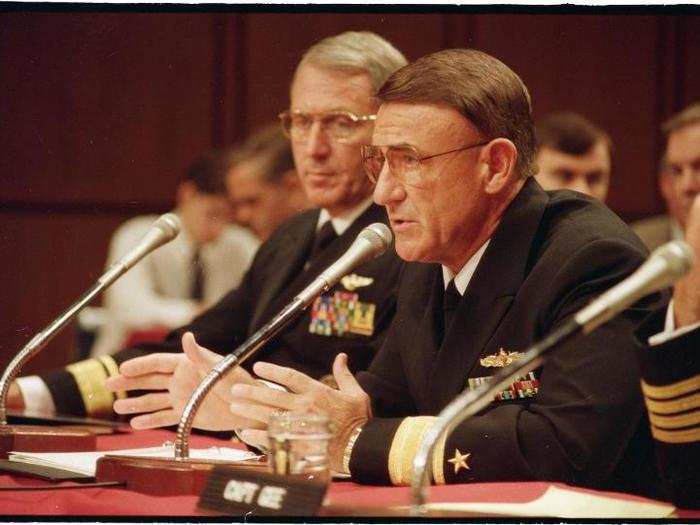
In 1996, the US government paid Iran $131.8 million for compensation. Victims' families received about $62 million of it. The Clinton administration expressed "deep regret," for what had happened, but the US has never formally apologized.
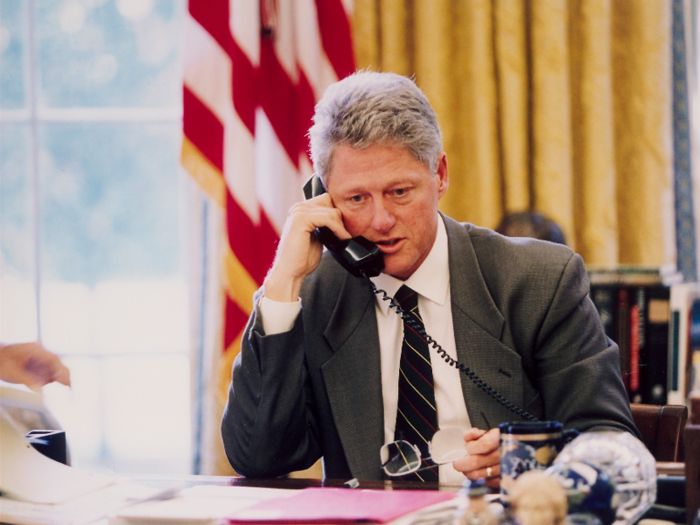
In the years since, the tragic incident has mostly been forgotten in the US. In Iran, it remains an open sore. Here, a poster shows the Statue of Liberty setting the flight on fire.
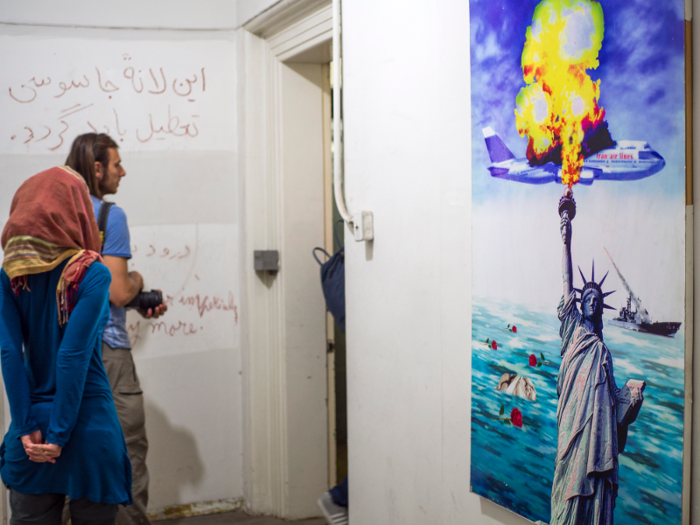
Popular Right Now
Popular Keywords
Advertisement
